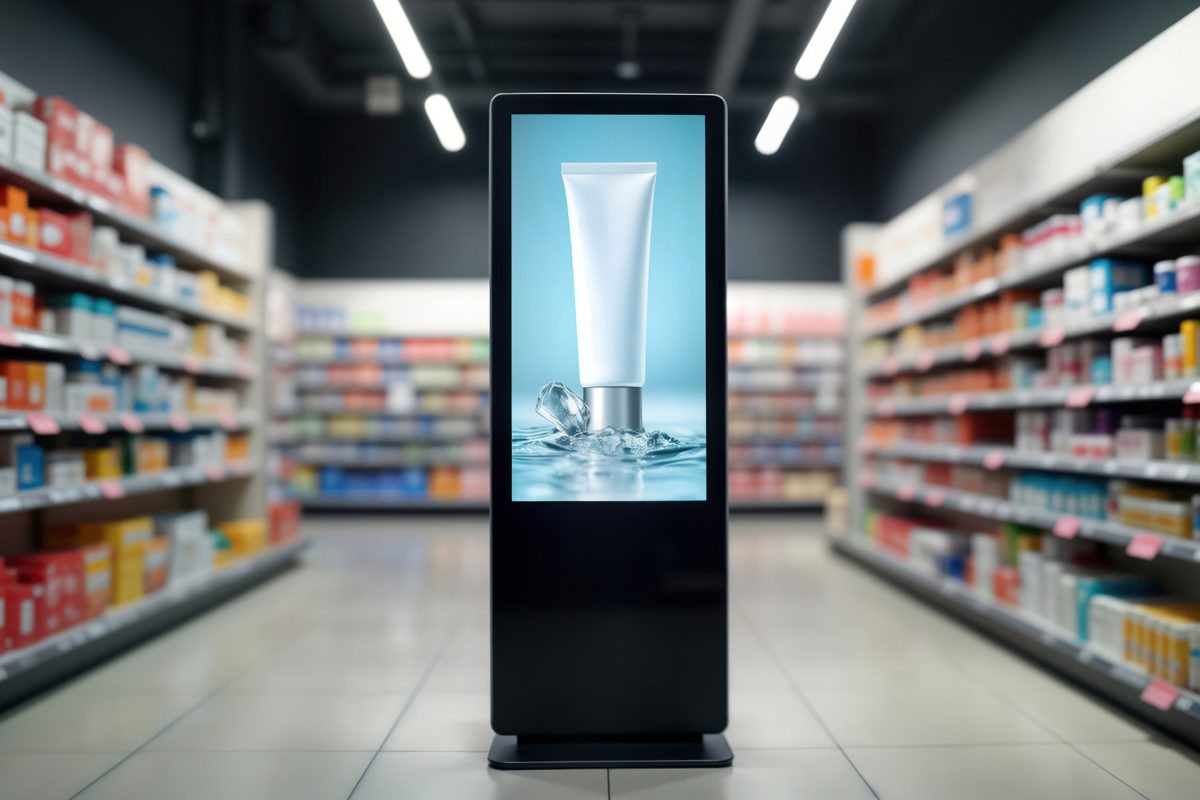 Blog
Blog
 Blog
Blog Everything You Need to Know About Omnichannel Loyalty
March 06, 2024
Scroll to Learn More
In an era defined by rapidly evolving consumer preferences and technological advancements, businesses are understanding that customer loyalty is a precious commodity. From the fundamental concepts to its benefits, we bring to you everything you need to know about omnichannel loyalty through this blog.
One feels a range of emotions when they hear the term loyalty. When it comes to customers’ emotional connections with brands, more and more business owners are beginning to see the light. There needs to be more than just transactional rewards for a loyalty program to be effective. The key to retaining loyal customer engagement over the long term is to provide them with memorable experiences that go above and beyond. The idea of omnichannel loyalty programs was born out of this need to expand the scope of loyalty programs beyond their conventional limits.
Discounted customers either expect discount every time or wait for a discount to buy again. An online-offline omnichannel POS with loyalty programs stimulates repeat visits. Shopping habits and sales volume don’t define loyal customers in modern retail. Brands should actively establish lucrative and emotional relationships throughout customer lifetime value, not only during transactions.
We now connect integrated loyalty system with customer experience. Modern consumers are pickier and value-seeking. This dilemma presents a chance to reconsider loyalty strategy and brand limits.
Shifting of Loyalty Program Dynamics
Customers might actually get something out of traditional loyalty schemes, like a freebie with purchase or a bonus for coming back. Although these offerings were accessible, they were exclusively aimed at clients who had previously entered the building.
To rephrase, the only time clients were rewarded in the past was when a purchase was made. Because of that, there will be less chances to give them an intensely moving experience.
These days, customer loyalty programs ought to incorporate each and every move. Some ways that businesses might incentivize consumer behavior include social media promotion, review writing, product quizzes, and referral programs. Wearing smart tags on apparel or going for a run in new shoes are two examples of ordinary actions that might boost customer satisfaction.
Omnichannel Loyalty Programmes
- Optimal customer service cross-channel interaction among all channels is the primary goal of omnichannel loyalty programs. This necessitates providing a meaningful engagement across all channels, from online to in-store. Customers expect all of the many devices, digital platforms, and channels through which they interact with your brand to function in tandem.
- Omnichannel loyalty programs rely on consistency. It used to be sufficient to broadcast a single promotional message across all sales channels for cross-channel interaction, but that was before the digital platform.
- Some perks of omnichannel marketing loyalty programs include individualized product suggestions and discounts, a simplified checkout experience, and one-click access for cross-channel interaction on all digital platforms. Stores should be flexible and open to new ideas in order to keep their programs fresh.
How can Businesses Benefit from Omnichannel Loyalty Programs?
Omnichannel loyalty programs provide a variety of ways for customer engagement, such as enabling them to swipe and scan their mobile devices in order to obtain incentives. This, in turn, helps to increase customer satisfaction and integrated loyalty system to the brand and boosts sales. These methods have been made possible by the development of technologies such as chip-based smart cards, RFID, real-time point of sale, the third generation of loyalty ‘Rule Engines’-biometrics (which include facial and voice recognition biometrics), wireless e-tags, and PSAs (personal shopping assistants), amongst others.
One example of an integrated loyalty system that provides clients with the necessary convenience is one that is linked to their credit cards. Customers may simply pay with a registered card, and they are guaranteed to get rewards each time they swipe their card. This eliminates the need for carrying along an additional card or bringing out an app.
ANZ Bank uses voice biometrics, Delta Airlines uses fingerprints, and Alibaba has set up facial recognition at KFC in Hangzhou, China. These are just some of the other trials and innovations that have been implemented in this sector.
The framework of the omnichannel marketing loyalty program should be aligned with your brand identity in order to improve your core message. This is accomplished by connecting the preferences, interests, and beliefs of your employees and consumers. Customer experience who give worn clothing to your business, for instance, might be rewarded for their generosity, which can have a beneficial impact on your brand while also helping you generate advocacy. The community of people who are concerned about their health and lifestyle has responded favorably to consumer benefits. It is possible that this might be quite beneficial for retailers who specialize in athletic clothing. In order to deepen the emotional connection that people have with your business, you might congratulate them on going for a run and then make sure that they are rewarded in your stores afterward.
In the past, we limited our understanding of omnichannel loyalty programs to the seamless merging of in-store, online, and mobile platforms. However, we have now incorporated an additional component: daily life, which encompasses all of the instances in which customers are simply being themselves.
Data-driven Suggestions for Better Decisions
In addition to strengthening consumer attachment to your brand, data-driven insights are another major perk of multichannel strategy of loyalty programs. A centralized system can keep all client information, even when there are several entry points to customer engagement. All this data integration provides companies with a window into customer behavior trends.
With the use of omnichannel marketing data integration, a restaurant, for instance, could discover that a specific suburb or time of day sees the highest volume of repeat guests. It also shows the things that these important consumers like to eat at the restaurant. The eatery can schedule particular times of the day to focus on locals or advertise to a certain neighborhood in an effort to increase business. As a result, both returning customers and new customer experience who share comparable demographics are more likely to visit. Store owners can discover more about their regular consumers and what makes them unique by accessing their transaction history. Businesses can greatly benefit from analyzing the generated data and patterns in order to make more informed decisions.
What do Consumers get out of Multichannel Strategy of Loyalty Programs?
- Personalised Products and Services. There’s a widespread misunderstanding that some consumers feel uneasy about businesses monitoring their financial dealings. But new Nielsen data shows that consumers are eager to give brands their information for personalized ads. Eighty-three percent of consumers are willing to share data in order for brands to give personalized recommendations and deals, and 91 percent of those customers are inclined to buy from those brands more often.
- Exclusive Experiences that Cannot be Purchased with Money. It is always important for customer satisfaction to get the impression that they are being provided with something that is unique and individualized. When a VIP experience is developed for a specific audience, it has the potential to make that audience feel much more privileged and unique. This is the ideal combination to convey the awe-inspiring sensations that are associated with multichannel strategy and to strike the sweet spot for the customer. When it comes to understanding which rewards are most appealing to your high-value clients, data-driven insights play a vital role once again. For instance, according to a poll conducted by The Drum, the most requested freebies for millennials are “free to travel,” “spa days,” “wellness treatments,” “event tickets,” and “exclusive shopping nights or weekends.”
Conclusion
Omnichannel loyalty programs represent a transformative approach in nurturing customer loyalty, transcending traditional transaction-based rewards to foster a deeper, more emotional bond between brands and their customers. By seamlessly integrating various channels—both online and offline—these programs offer a holistic experience that is consistent, personalized, and deeply engaging. The emphasis on creating memorable experiences through everyday actions, coupled with the utilization of cutting-edge technologies like biometrics and real-time data analytics, enables brands to offer unique, personalized rewards that resonate with consumers’ lifestyles and preferences.
Moreover, the strategic use of data-driven insights allows businesses to tailor their offerings, ensuring that each customer feels valued and understood. This not only enhances customer satisfaction but also gives them a sense of belonging and loyalty towards the brand. In conclusion, omnichannel loyalty programs are pivotal for businesses aiming to thrive in today’s competitive times by building lasting relationships with their customers through meaningful, personalized engagement across all touchpoints.
FOLLOW ALONG
Sign up for our resources to stay informed about the latest updates in the industry.
Every Company has a Story. Learn More About Ours.





